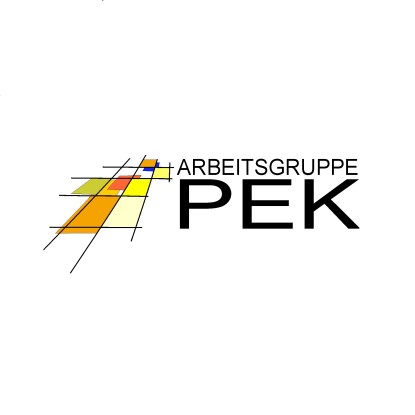Cooling concrete as a solution against heat
Press review: an article on tagesschau.de
2025/08/25 by Pascal Kiss, SWR
Concrete that reflects sunlight and can thus cool buildings and streets – an innovation in the field of climate adaptation. An international team of researchers has now published its findings.
Buildings often heat up considerably in summer – concrete in particular stores heat and contributes to overheating. However, an international research team has developed a concrete that could solve this problem: The so-called “Supercool Cement” reflects the sun's rays so effectively that it passively cools buildings – without the need for air conditioning. The scientists report on their project in the journal Science.
How small crystals in concrete cool
The secret lies in the concrete surface. Tiny crystals, known as ettringites, form as the concrete hardens. In the new process, the concrete is covered with a special film. Under negative pressure, small cavities are created whose surfaces are covered with crystals. These crystals act like many tiny mirrors. As a result, the concrete reflects 96 percent of the sunlight. In a practical test on a roof at 38 degrees Celsius, the new concrete not only remained cool, but was even five degrees below the air temperature, while normal concrete heated up to almost 60 degrees.
The concrete reflects some of the energy directly back into space. According to the researchers, this makes use of an atmospheric “window” through which certain wavelengths can leave the Earth's atmosphere without much absorption. “There are a few ways to influence the wavelength so that you can reach exactly this window,” says materials scientist Eduardus Koenders, Head of the Institute for Materials in Civil Engineering at TU Darmstadt.
Under optimal conditions, a building can be cooled down significantly, says Koenders: “Of course, this also depends on the radiation intensity. But you can achieve a cooling effect of around ten to 15 degrees.” The materials scientist has himself worked on a similar cooling cement in the EU's Miracle project. Three patents have resulted from the research project.
Cooling concrete for new and existing buildings
According to the research team, the manufacturing process for the new concrete is easily scalable and can be used not only in new buildings, but also on existing roofs, façades or even roads. “Of course, you can also do this retrospectively, but it works best on surfaces with direct sunlight, such as roofs,” says Koenders.
The potential applications are diverse: in addition to roofs, bricks and façades, roads and sidewalks could also be made of the new concrete, says the materials scientist. Existing roofs could then be retrofitted and additional building envelopes could be constructed at a later date. The researchers have also developed colored variants. Even with the addition of color, the concrete still reflected more than 90 percent of solar radiation.
Better CO2 balance due to production
Model calculations show that this could significantly reduce temperatures in cities. At the same time, the concrete improves the carbon footprint: around 25 percent less CO2 emissions are generated during production, as the cement is produced at lower temperatures. A life cycle analysis even shows that the concrete saves more CO2 over 70 years than is released during its production. In hot climates, the concrete could even achieve a negative CO2 balance.
When will the cooling concrete come onto the market?
In Spain, the company PhotoKrete is already working on such a concrete. “Several large, international companies in Spain have contacted us,” says Eduardus Koenders from TU Darmstadt. The interest is great. “Now it's all about how best to get the product on the market.”
He is optimistic that this will happen quickly. He sees great potential, especially in hot regions such as the Mediterranean. Its use is particularly effective in regions with high solar radiation and low cloud cover, as the reflection and radiation can be optimally utilized here.
For use in Germany, however, solutions still need to be found for winter, when buildings need to be warm rather than cool. An additional building envelope with insulation would be conceivable. But one thing is clear: with climate change, technologies such as cooling concrete are becoming increasingly important for adapting buildings to the new climatic conditions.
Read the original article, which appeared on tagesschau.de, here.

